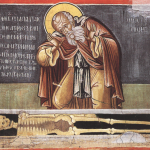THE SEASONS COME, THE SEASONS GO: Notes about various things which have spanned my personal, furry-book boundary between spring and summer. In roughly chronological order.
Edmund White, The Married Man. At least one reviewer believed this to be White’s best book. I can’t imagine how that could be true.
It’s a fairly standard account of gay love and death, enhanced by a few terrific turns of phrase and obviously by the subject matter, and nearly destroyed by a midsection devoted to hating America.
No, for real, give me a moment: I don’t like Providence, RI either. And I even can see that perhaps the overdone buzzsaw-whine of this section was meant to be unattractive–we’re shown, for example, that the narrator is busy destroying the tacky home he’s subletting, and his dog menaces the local children while reeking horrid smells from some kind of gland in his ass… and yet, despite that, the dog is a Mary Sue (everyone loves him in the end! Except me!) and no matter how valid your critique of America is, fifty pages of humorless whining is really, really tiresome.
Once the book leaves New England, everything gets better, but really the best parts of this book are a fairly good novel, whereas Nocturnes for the King of Naples is a masterpiece. Read that instead.
Spring, Summer, Fall, Winter… and Spring: This is a movie set at a Buddhist hermit’s retreat. It is one of those gems thrown onto the shore by my Netflix account, so old and random that I have no idea why I ever requested it.
It’s predictably beautiful, predictably recurrent, and perhaps predictably tragic. But there’s a portrayal of penance (in the Fall section) which I hope will stick with me as long as I live. I don’t know if it can even be called penance, really: It’s punishment transformed into sublime beauty, and yet there’s no explicit notice of forgiveness. Can there really be penance in a world where no God nor afterlife will offer complete reconciliation, complete and therefore unimaginable healing of our irrevocable acts? (The first section really hammers this home, as well, and does a great job of preparing us for the Fall section.)
I’d show this to a catechism class, if anyone would let me teach one. I think it’s an amazing jumping-off point for a discussion of guilt, penance, forgiveness, loyalty, and sublimity.
I’d also very strongly recommend this to fans of The Mission, for the obvious compare/contrast.
E.F. Bentley, Trent’s Last Case: Both Agatha Christie and Dorothy Sayers wrote gushing blurbs for this fairly standard, well-written mystery. It is okay. The very last revelation is quite fun. I guessed 1 1/2 of the twists before that one, which, given my record with Christie (only one accurate guess ever), suggests that this is perhaps not so unexpected as all that.
The writing is very easy and pleasant. The paleoconservatism is not my imagination–finance, and abstracted capitalism generally, are thoroughly demonized; but perhaps more interestingly than that, this book made me realize that if you beat up on deracinated cosmopolites you will necessarily also target anyone who would be unwelcome in the heartland. Some people are deracinated for a reason.
I really did like seeing the beginnings of new technologies, e.g. the page-and-a-half (?) description of fingerprint powder. I’d also recommend the fingerprint passage to anyone who wants to learn how to do exposition in a fun way.
Tom Stoppard, The Invention of Love: Thin Victoriana.
I was honestly the worst audience for this, but really, just reading the biographies of the men involved would give you a more complex picture of this era. This is AE Housman filed down to almost nothing, which is poignant I guess, but deeply self-comforting for our own era. Is there a fight here? I mean, is there any kind of tension whatsoever, with at least two competing sides? I don’t see it.
Wilde, a simplistic movie, did better with Wilde; the most interesting thing in the Stoppard, for me, was the use of the ancient gods. He does that in Rock ‘n’ Roll, too. Is this just a sentimental sediment of Christianity, or are the gods doing something else and irreducible?
The House that Screamed/La Residencia: So you can see this on IMDB tv, as I did, because it was featured on “Movie Macabre”–a series I think all red-blooded Americans will remember as “Elvira, Mistress of the Dark.” Revisiting the series has been something of a disappointment for me.
But this installment is… memorable. I suspect the Spanish title really translates as “The Residential School,” in which case… yeah. It’s Catholic abuse exploitation a-go-go. Smokin’ hot chicks in corsets getting whipped and so forth. It’s impossible for me to recommend this, but star Lilli Palmer is amazingly beautiful; I was genuinely, if miserably, fascinated to see how the Spanish production team worked out any cultural anxieties about the power of the Church (yes, there is a scene where nice reform-school girls saying their prayers are intercut with a bad reform-school girl getting beaten); and I think the whole cultural positioning of this movie is sickly fascinating given What We Now Know about how horrific the residential schools really were. This seems like the kind of movie you only make in that slipping-off-the-tightrope cultural moment when you know the Church has become complicit in horrible crimes and yet you haven’t acknowledged those crimes, so it’s still kind of B-movie, popcorn.











